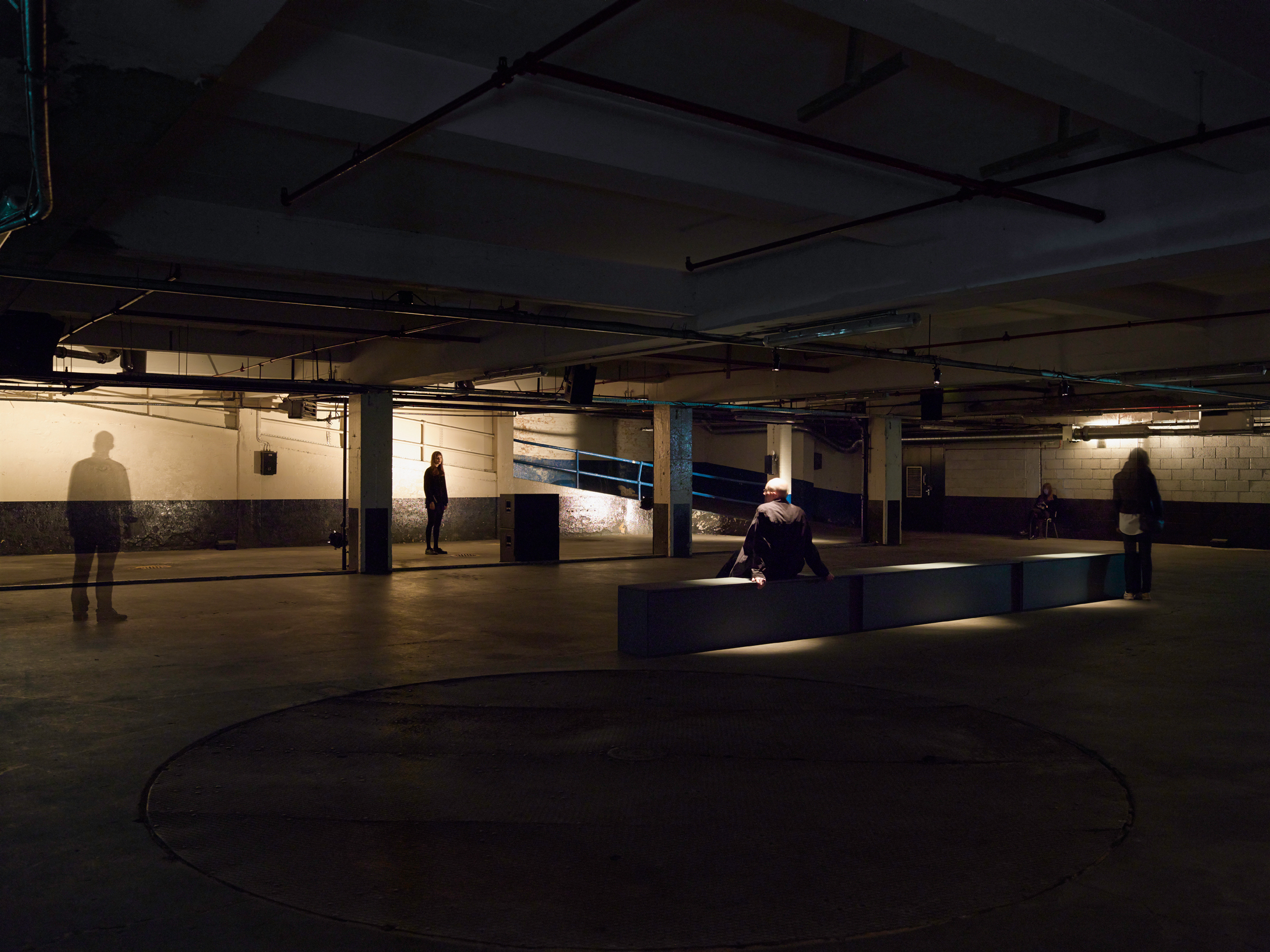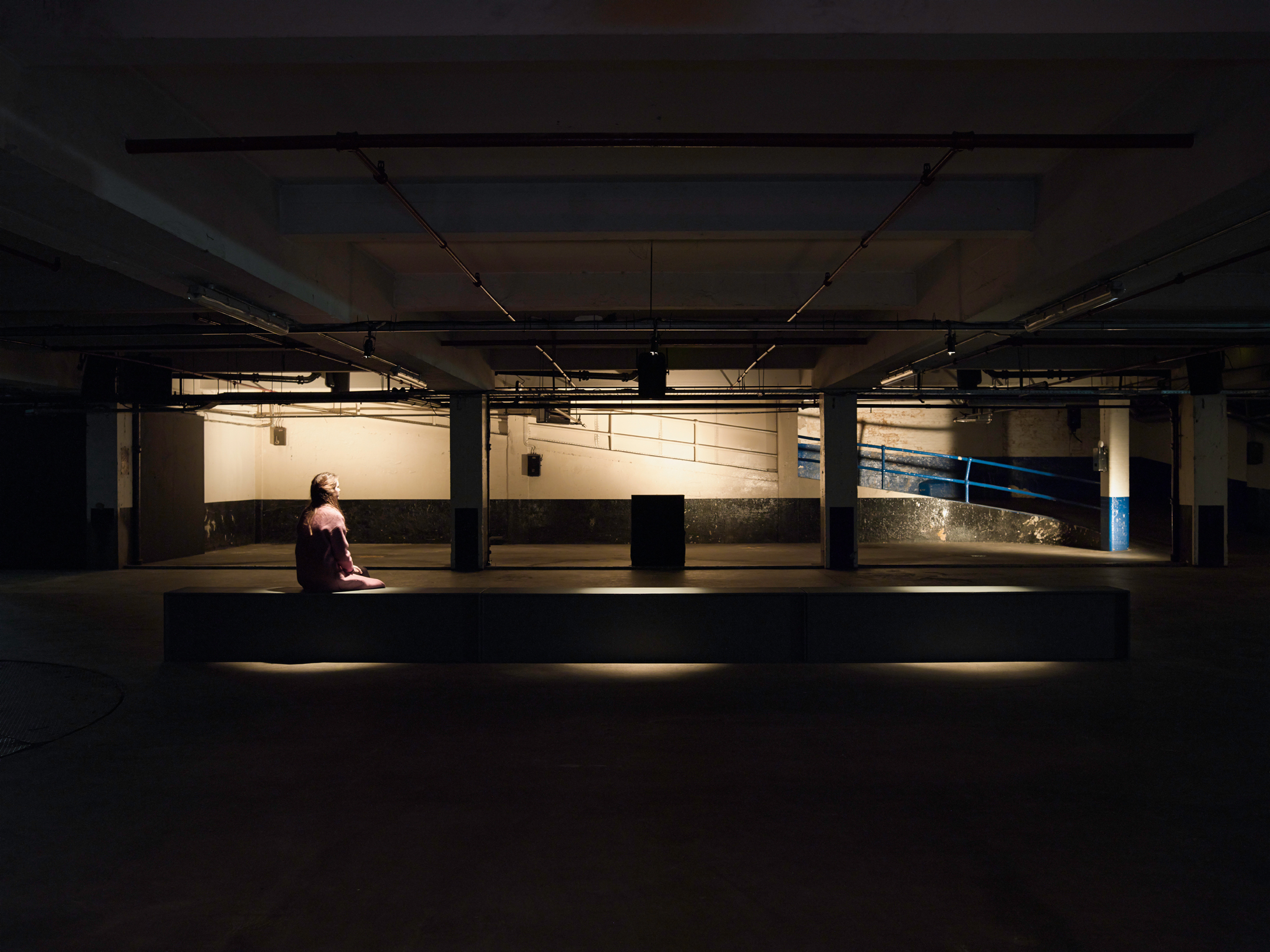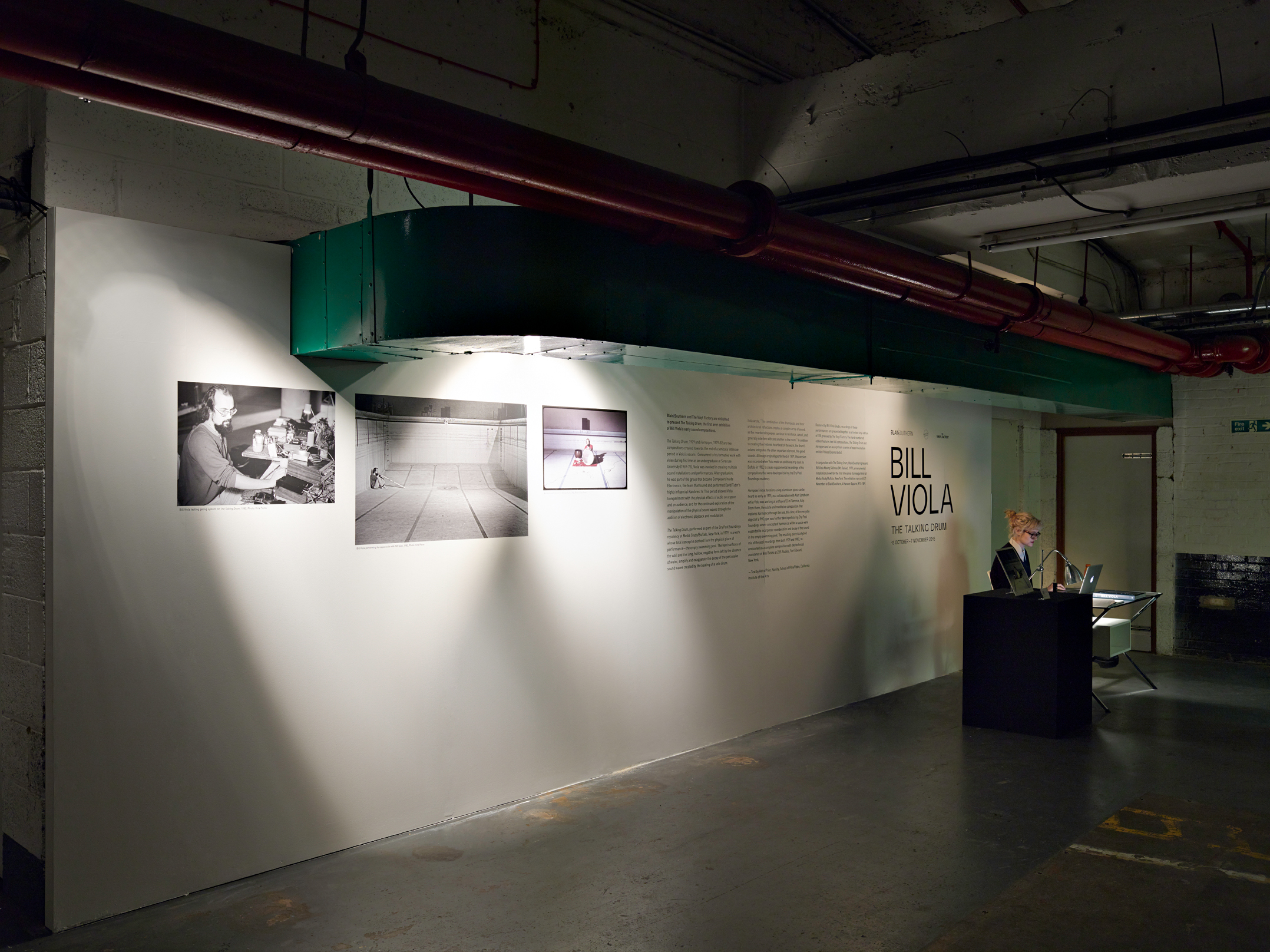Talking Drum & Hornpipes
By Bill Viola
Spatialisation and installation design by James Bulley and Tom Richards
Brewer Street Car Park, London, UK
(13 October — 7 November 2015)
Presented by Vinyl Factory and Blain|Southern
Talking Drum
An improvisation for percussion and echoes in a resonant hall, with pre-recorded sounds incorporated as low-level audible “shadows” within the reverberations. A large bass drum is beat repeatedly in a rhythmic pattern in a large resonant space. (The work was originally performed in an empty indoor swimming pool with an acoustic reverberation of over nine seconds.) The sequence of improvised drum beats moves between slow rhythmic patterns of discernible strokes to periods of rapid high intensity, where individual drumbeats merge into a larger mass of continuous noise. The highly resonant character of the space compounds this effect as the percussive beats begin to interact with their own echoes. The combination of the drumbeats and their architectural reflections creates a complex array of sound, as the reverberating waves continue to reinforce, cancel, and generally interfere with one other in the room.
After an exploration of these acoustic phenomena, the drumming again becomes sparse and simple, and pre-recorded sounds are introduced from a single loudspeaker. Various natural sounds, such as dogs barking, people yelling, birds screeching, and machinery operating, are run through an electronic gate, a device that follows the loudness contours of an external sound, in this case the drumbeats. This allows these sounds to reach the speaker, and thus the room, only when the drum is struck. They fade out as the drumbeats die out in the space. However, the loudness of the drum at the moment when it is struck overpowers these sounds and momentarily masks them, so that they are only present in the room as sonic “afterimages,” audible primarily within the time that the dying reverberations trail off in the space. At first, it is only apparent to listeners that the character of the echoes has changed, but then gradually they become aware of the new sounds contained within the individual drumbeats. The more the drum is beat, the more the shadow sounds are heard. The resonant characteristics of the architecture in turn affect the introduced sounds, altering their original qualities and sonic form. A second improvisational exploration of this new subtle and complex situation is then conducted by the performer.
Bill Viola
(Whitney Museum exhibition catalogue, 1997)



